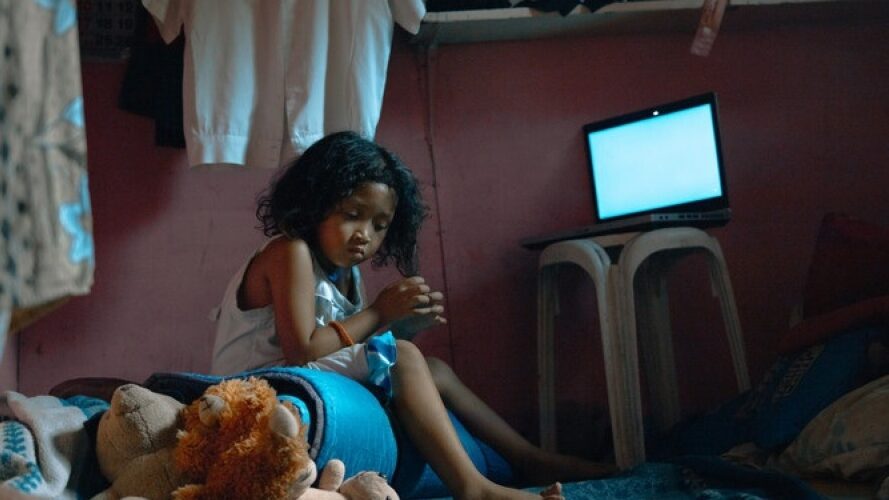Study reveals dramatic rise in the prevalence of internet-based child sexual exploitation in the Philippines
Online Sexual Exploitation of Children (OSEC)
Wednesday, May 20, 2020, MANILA, PHILIPPINES — Within three years, the estimated prevalence rate of internet-based child sexual exploitation in the Philippines more than tripled – from 43 out of every 10,000 Internet Protocol (IP) addresses used for child sexual exploitation in 2014 to 149 out of every 10,000 in 2017.
That is one of the highlights of a ground-breaking study released today, May 21, titled “Online Sexual Exploitation of Children in the Philippines: Analysis and Recommendations for Governments, Industry and Civil Society.”
The study also confirmed the Philippines as a global hotspot for OSEC with data from participating law enforcement agencies globally showing that the country received more than eight times as many referrals as any other country during the 2010-2017 baseline period.
The study was led by IJM, in partnership with the Philippine Government, the National Center for Missing & Exploited Children (NCMEC), and a variety of stakeholders, under the U.S. - Philippines Child Protection Compact (CPC) Partnership between the U.S. Department of State Office to Monitor and Combat Trafficking in Persons and the Government of the Philippines.
It brought together global and local experts to better understand the nature and scale of online sexual exploitation of children (OSEC) in the Philippines. Fourteen partners representing governments, law enforcement, researchers, and non-governmental organizations collaborated on this project, with eight of them sharing casework data or case histories.
The study was not able to measure the prevalence of OSEC due to inconsistencies in the quality of reporting by electronic service providers (ESPs) and because ESPs are not currently detecting livestreamed abuse. This lack of detection of livestreamed abuse results in lack of reporting to clearinghouses such as NCMEC which makes CyberTipline reports available to relevant law enforcement agencies.
Because technology is yet to be developed or deployed by ESPs to detect livestreamed abuse, it is often uncovered only when a foreign law enforcement agency identifies an offender for a different but related offense, like possession or sharing of child sexual exploitation materials (CSEM). The study revealed that 64 percent of Philippine OSEC cases were initiated by referrals from foreign authorities.
“The tech industry should prioritize detection of all child sexual exploitation materials—especially newly created CSEM and live-streaming—because of the gravity of harm that repeated sexual exploitation causes victims,” said IJM Philippines Director Samson Inocencio Jr. “There are children who need rescue now, but rescue starts with timely detection and robust reporting.”
The study examined 90 OSEC cases investigated between 2011 and 2017, involving 381 victims. Among the 43 victims for whom the exact length of abuse was known, the average length of abuse was two years, ranging in length from two months to four years.
An analysis of victim profiles further showed that the median age was only 11 years old, with the youngest less than one year old. Another unsettling finding is that 41 percent of victims’ abuse was facilitated by biological parents and 42 percent by other relatives.
Data from NCMEC’s CyberTipline reports showed that the estimated number of IP addresses used for internet-based child sexual exploitation in the Philippines sharply rose, from around 23,333 in 2014 to 81,723 in 2017, or a 250-percent increase.
This corresponds to a growth of estimated prevalence rate from 43 out of every 10,000 IP addresses used for child sexual exploitation in 2014 to 149 out of every 10,000 in 2017.
“The results of the study show that OSEC is a growing and heinous crime,” said Philippine Justice Undersecretary Emmeline Aglipay-Villar, who is in-charge of the Philippine Department of Justice’s Inter-Agency Council Against Trafficking. “We need to act as a global community – ending impunity in both source countries like the Philippines and demand countries. The Philippine government is committed to sustaining our collaboration with international law enforcement agencies in combatting this threat against our children.”
Ambassador John Richmond of the State Department’s Trafficking in Persons Office said, “The U.S. government has dedicated significant resources toward ending the online sexual exploitation of children. We are encouraged by the success of our partnership with the Philippines. Together we are working to ensure traffickers are prosecuted, victims and survivors are protected, and this crime is prevented for future generations.”
Apart from tech and financial industry proactively detecting and reporting OSEC livestreaming and newly produced CSEM, the study also recommends government legislation expanding ESP reporting requirements to make CyberTipline reports more useful to law enforcement; greater international law enforcement collaboration by placing foreign police liaisons in source countries, among others; implementing child-protective measures and trauma-informed care from rescue to reintegration; increasing OSEC-dedicated staffing, budget and collaboration among law enforcement agencies; and improving collaboration in information and intelligence-sharing, measurement and data collection, and research on OSEC.
Download the full report here and summary report here.
About International Justice Mission:
International Justice Mission is a global organization that protects people in poverty from violence. IJM partners with local authorities in 19 program offices in 11 countries to combat slavery, violence against women and children, and other forms of abuse against people who are poor. IJM works to rescue and restore victims, hold perpetrators accountable, and help strengthen public justice systems. Learn more at IJM.org.
###
MEDIA INQUIRIES
For media inquiries, contact:
Maggie Cutrell
mcutrell[at]ijm.org
+1 478-955-4666